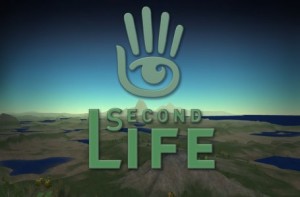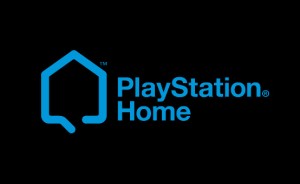The Mysterious Numbers of Home
“It reminds me of my original critique of Sony’s approach to Home during the series of articles at G4, where it seemed Sony’s desire to court everyone basically ignored those who already got it.”
–Patrick Klepek, www.giantbomb.com
by Jersquall, HSM Editor Emeritus
Numbers.
We live in a world of numbers. Business is all about numbers. And even something as fun as PlayStation Home, ultimately, is a business venture that has to answer to its numbers.
Numbers are the one thing that can determine success in the digital world we live in. Numbers. Social media sites like Facebook, YouTube and Twitter all have no problem letting everyone know their user base numbers. The gaming world, much like the social media world, also use numbers to gauge how their product is faring.
Which numbers are used, though, can imply misleading results.
It is important to understand how the numbers game works when it comes to games released versus actual gamers playing said games. EA released a statement that twelve-million copies of Battlefield 3 had gone out; what they forgot to mention was that about eight-million people actually purchased the game. Eight million is still a mighty high number, and social media has no doubt helped sell a portion of games by advertising and word of mouth, and you can bet people have flocked to media venues to chat about games, but that is another story altogether. What we’re looking at are the numbers used for marketing purposes, versus what reality might be.
It’s interesting to note a few examples. Blizzard Entertainment announced World of Warcraft on September 2, 2001. The game was released on November 23, 2004. According to Blizzard, around 11.4M people currently have accounts for World of Warcraft. There are 11.4 million accounts, not people actually playing at once. Some have estimated that roughly 8-8.5M individuals people play this game, many having multiple accounts. Sub accounts are used as ”mules” to hold items.
So how many people actually play these online megahit games?
 Final Fantasy XI Online: in December 2003, Square Enix president Yoichi Wada announced that there were over 200,000 subscribers to Final Fantasy XI, allowing the company to break even and start making a profit. There were between 200,000 and 300,000 active players daily, a few years later in 2006. Yes, it was on the PlayStation 2, but this was a very popular game at the time. In fact, as of August 14, 2006 the Xbox 360 version was the sixth most-played game on Xbox Live.
Final Fantasy XI Online: in December 2003, Square Enix president Yoichi Wada announced that there were over 200,000 subscribers to Final Fantasy XI, allowing the company to break even and start making a profit. There were between 200,000 and 300,000 active players daily, a few years later in 2006. Yes, it was on the PlayStation 2, but this was a very popular game at the time. In fact, as of August 14, 2006 the Xbox 360 version was the sixth most-played game on Xbox Live.
So now we turn to PlayStation Home. Home, which has been discribed as a social community and gaming platform app, has also released numbers which were impressive. If you were around prior to the open beta, you’ve had the chance to see announcements throughout the years on Home’s growth: 2.2 million (in the U.S. and Canada), 5M, 17M and — last year — more than 23M registered PlayStation Home user accounts. This was no doubt a global figure, right? Users were also averaging fifty minutes per session, the last we heard.
So how do we start putting these social and gaming numbers together to see how successful these games and related social media sites truly are?
 Let’s take a look at what may be the most-played MMORPG on the planet: World of Warcraft. As previously stated, Blizzard Entertainment announced World of Warcraft had around 11.4M accounts. A game very popular amongst PC players. How many people actually follow World of Warcraft on Twitter? 237,845. (Twitter actually went live in 2007) And how does the official Facebook page of World of Warcraft compare? It has 4,449,520 “likes.” I don’t use Facebook, so I can’t compare how many friends WoW has.
Let’s take a look at what may be the most-played MMORPG on the planet: World of Warcraft. As previously stated, Blizzard Entertainment announced World of Warcraft had around 11.4M accounts. A game very popular amongst PC players. How many people actually follow World of Warcraft on Twitter? 237,845. (Twitter actually went live in 2007) And how does the official Facebook page of World of Warcraft compare? It has 4,449,520 “likes.” I don’t use Facebook, so I can’t compare how many friends WoW has.
How does PlayStation Home stack up? Right now it’s an enigma. Sony isn’t sharing specific numbers for its active user base. You would think they would want to, right? If you’ve got between twenty- to thirty-million accounts, at face value that sounds like a very high number — but you have to subtract out what we can only guess are a lot of alternate accounts for region and outer region use. And a registered account is just that: an account. There is no publicly-disclosed data regarding active users who return to the service repeatedly.
We might be able to use Twitter as a mini-gauge and see.
U.S. PlayStation Home does not have a Official Twitter page. However, the official E.U. PlayStation twitter page has 232,168 followers. The Official European Twitter Account for PlayStation Home has 8,198 as of this writing.
Did this help? Not really.
 One semi-analogue to Home might be Second Life, which has over 21M registered accounts, but is likewise tight-lipped about actual active users. The only data point that’s publicly available places the number of concurrent users somewhere between 50,000 to 60,000 people, and that data’s two years old.
One semi-analogue to Home might be Second Life, which has over 21M registered accounts, but is likewise tight-lipped about actual active users. The only data point that’s publicly available places the number of concurrent users somewhere between 50,000 to 60,000 people, and that data’s two years old.
I still try to wrap my head around the fact that we can’t get Sony to reveal simple stats like how many Home users are active. Something as basic as how many users are online with you is a feature that forums and even older games like Final Fantasy XI Online could tell you with a few clicks of your keyboard or controller button.
It is perhaps reasonable to speculate that Home has somewhere in the neighborhood of 250,000 active users if all regions are added up, but that’s still just a guess. Further, it’s impressive to point out that Home has been going — and growing — for half a decade now. Despite all the prognostications of doom and failure — usually from disenfranchised users who want it all to end because of some personal alienation — Home has obviously done a good job of hitting its numbers year after year.
Why is it so important to us, as users, to know these financials? Will it actually affect our enjoyment of the service at all?
 …Well, no. Whether Home has ten users or ten-million users, it’s still an inherently enjoyable experience, and obviously a business formula that works. No, the reason why we want to know is because we want Home to succeed. This is social MMO game; it lends itself to a feeling of community. And who wants to be part of a failing community? You want your community’s leadership — in this case Sony — to reinforce your decision to invest time and money into Home. So when we’re not given many data points to reinforce that belief, and the ones we are given are maddeningly vague, it makes the consumer question whether or not things are going well. Such seeds of doubt can affect consumer decisions when buying virtual commodities that hold no resale value.
…Well, no. Whether Home has ten users or ten-million users, it’s still an inherently enjoyable experience, and obviously a business formula that works. No, the reason why we want to know is because we want Home to succeed. This is social MMO game; it lends itself to a feeling of community. And who wants to be part of a failing community? You want your community’s leadership — in this case Sony — to reinforce your decision to invest time and money into Home. So when we’re not given many data points to reinforce that belief, and the ones we are given are maddeningly vague, it makes the consumer question whether or not things are going well. Such seeds of doubt can affect consumer decisions when buying virtual commodities that hold no resale value.
Sony’s not required to release any information to us regarding Home’s performance or metrics, and that’s certainly their choice. Indeed, as we cast our gaze forward, perhaps it doesn’t matter; the next console generation is quickly approaching, and it’s a fair guess to assume that right now, all of the developers involved with Home — Sony and third-party alike — are to some extent examining how to migrate their consumer bases into new ventures and translate that brand loyalty into non-Home endeavors (such as Vita games), even as they commit further resources to the Home platform.
Here’s a rather interesting number. Ted Regulski, at the most recent Game Developer Conference, stated: ”The number of registered PSN accounts across all regions has officially surpassed 90 million.”
I’m bringing this up because HomeStation is largely a Home-centric publication, and it caters to a Home-centric audience. Yet it is important for us to remember that Home, within the greater scope of PlayStation Digital Platforms, is only one piece of the PSN pantheon. One segment of the overall balance sheet. Because it’s such a unique piece, it’s been interesting to watch how Sony’s evolved it to try to better integrate it with the rest of their gaming world, but it does beg the question of how the population numbers and consumer habits Sony built with Home will translate to their other initiatives, both current and future.
It’s all about numbers.
The good news, however, is that in this industry, numbers are driven by consumer engagement, which is a function of how well the fun can be engineered for our benefit. So, ultimately, it’s all about us.



Nice read Jersquall. I am sure many of us have wondered at the numbers and whether they will be consistent enough to merit Home being brought to the PS4 when it arrives. I certainly hope so, a lot of people have a good deal invested here. I think that depending upon the price for the PS4, many will buy it for Home alone with games being a second choice. Home provides an incredible outlet for so many people. I would hope that even when the PS4 launches they would keep Home up and growing on the PS3 for quite awhile even if they chose not to add it to the new console.
But I have a feeling that they will keep it going, it does provide income and it is a platform that can constantly grow and change for years to come.
Thank you, Burbs
Not only multiple accounts from home user but also all those who have a PS3 hooked on the net and clicked on the home icon just to see what it is. As I did 18 months ago … But I kept comming back and frankly. I would love to know how many siblings I have.
… But I kept comming back and frankly. I would love to know how many siblings I have.
Mark Twain said there are three kinds of lies. “Lies, damned lies and statistics.” I always feel that all Sony offers us are statistics… and those are so vague as to be even more useless. I have to wonder why; I bet we all do. Does anyone think that Home has millions of individuals all logged on the same time? I doubt it. Perhaps because Sony is a Japanese company they are more reticent?
Interesting article, Jers.
It’s actually quite funny that these social applications don’t like releasing figures IMVU which released figures saying they had 40 million accounts which couldn’t be proved or disproved, only have about 100,000 users on at they busiest times, which is a figure that comes up while your on there. But neither figure confirms anything, as it does take into account duplicated alternative accounts and it doesn’t tell us average users numbers. The one figure released recently was 1 million unique visitors to Aurora now if that’s true it took best part of a year to get 1 million accounts to visit, we will be positive and say it’s not including people with multiple accounts. A million sounds not a lot when a AAA games expects that in the first weekend it’s released, but it is 20,000 new visitors a week. Problem is numbers can be used in so many ways. For home it could be homes a massive profit maker so it’s in fine shape, or it could be a fore runner to something new on the PS4 so even more money can be made. Giving the BS that home couldn’t really work with the PS4 so we all start again. Or its ok and pays for itself but as soon as PS4 is released its a perfect time to start letting home disappear because as we know home can be so infuriating when it goes wrong. But I can’t imagine Sony enjoy the cost of man hours, brand image plus money when home goes wrong. Would they have to refund everyone if they pulled the plug now and what cost to the image. Ultimately it’s whether it makes enough profit for Sony that’s the only real figure that counts. Get us that one and we will know what lies ahead.
All games and communities peak at some point. I would like to know the numbers at Homes peak. Actually I am pretty sure that time has passed. Maybe some day we will know more..
All about the almighty dollar if we cant get enough people can we get enough money